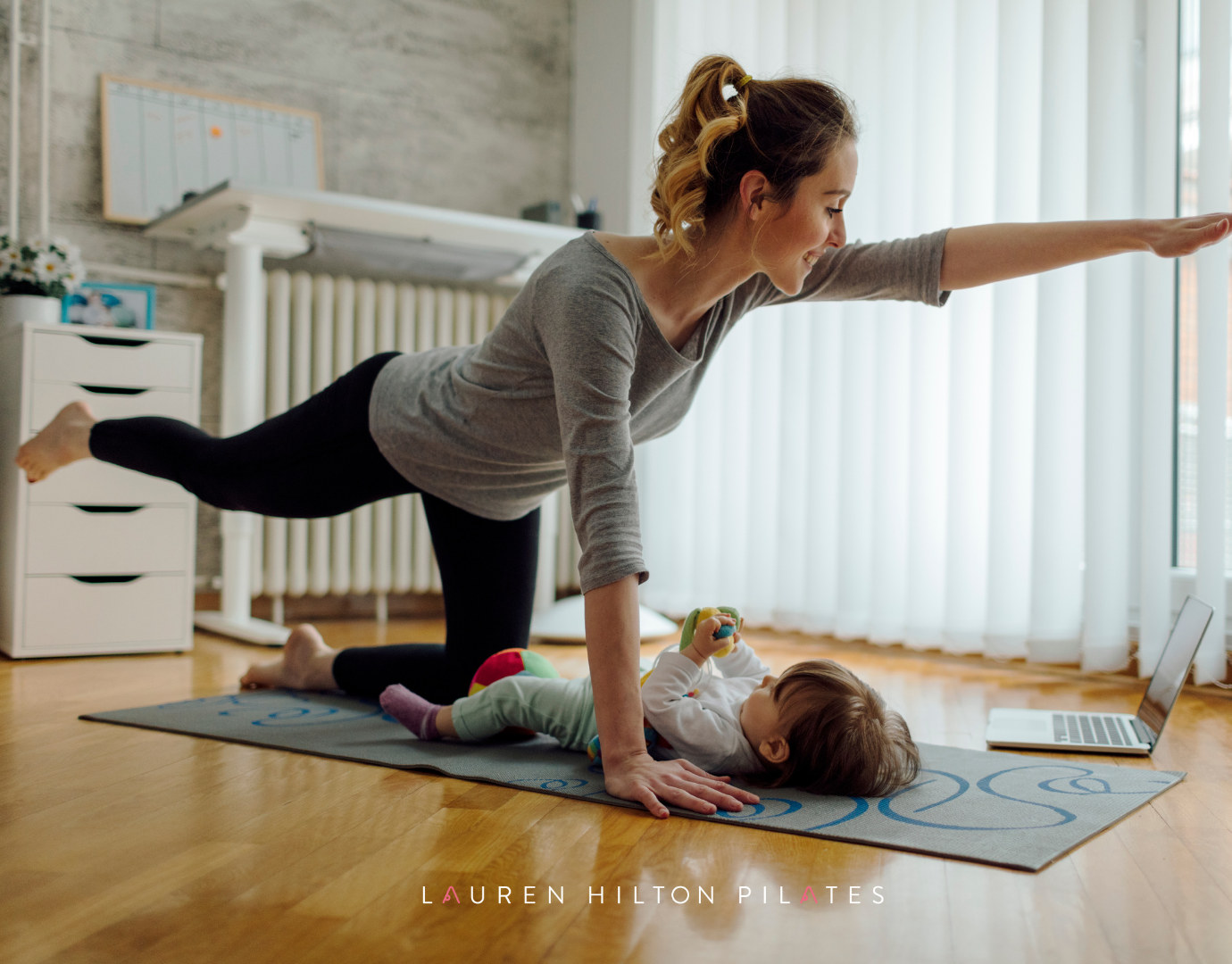Exercising after having a baby
Where to begin?
If you’ve recently had a baby and want to get back into exercise it can be difficult to know where to begin, especially when you factor in exhaustion and lack of time. In this blog we’ll guide you through the main considerations before resuming exercise, introduce you to a specific postnatal programme which will help support your recovery from pregnancy and birth, resulting in helping you achieve your fitness and wellbeing goals.
When pregnant you are encouraged to prioritise your health because it is important for ‘the baby’ but once you have given birth it often no longer feels valid to put your own health and wellbeing first.
Firstly, let’s challenge this.
As a new mum you need to have as much energy as possible in order to tend to your baby’s physical and emotional needs. If you’re stressed and physically depleted this can effect your relationships, your sleep patterns and your overall quality of life and over time could lead to long-term ill health. Looking after your postnatal health and wellbeing as a new mum is incredibly important. A happy, well rested, content mum is much more likely to be able to face the physical and mental challenges of motherhood. You are so important!
After having a baby our bodies can feel different and it’s not uncommon to feel disconnected to them following pregnancy and birth. There can also be very real psychological effects including postpartum depression and birth trauma. Physically, the alignment of the spine temporarily changes, the pelvic floor has stretched to allow for the growing of our baby and for their delivery, not to mention the physical strains of motherhood; like constant rocking, lifting car seats, and bending over cots.
With this in mind, it’s important as a new mum to nourish your whole body health in a nurturing and caring way and to treat yourself with the same kindness that you would offer a dear friend.
What physical aspects should I consider before beginning or returning to exercise after having a baby?
Women are told to wait until their 6 week GP check before resuming exercise, but unfortunately the quality of this check is becoming poorer and poorer. Most women report the GP not examining any scarring or checking of the abdominal wall. For this reason, and before beginning exercise, it’s important to check the abdominal wall for any separation as well as to ensure your pelvic floor is ready for load.
The type of birth you had will also affect your healing time and it’s also important to remember that everyone is different. If you had a C-section, severe tearing or an episiotomy, it is likely you will want to wait a little longer.
If you were a runner before having a baby we advise waiting until at least 5-6 months before re-starting. This will allow time for your pelvic floor muscles to heal. Running or returning to HIIT classes before your pelvic floor has had time to heal increases the risk of leakage and pelvic organ prolapse. The following statistics highlight just how common postpartum injuries are and highlight the importance of a specific post-natal rehabilitation programme.
50% of women experience pelvic organ prolapse with symptoms of bladder and bowel dysfunction. (Hagen et al 2004)
50% of women who have had children have some degree of symptomatic or asymptomatic pelvic organ prolapse. (Hagen & Stark 2011)
In women with vaginal prolapse, 63% will experience urinary stress incontinence. (Bai et al 2002)
Read the full list of statistics here.
I’m ready to start exercise again but I don’t have time and I am exhausted.
Being a new mum is both physically and mentally exhausting, so finding time and energy for exercise can be the biggest challenge. We suggest starting slowly and building your awareness of the muscles that feel like they have lost tone, consider what it feels like when they activate. For example, if you know that you’re struggling to hold in a wee or are getting some leaking, then your pelvic floor will need some gentle attention.
In order to strengthen a muscle, you firstly need to be aware of how it is currently working. You need to be able to connect to it, i.e. how does it contract and what does it feel like. Once you have built that awareness you can start to incorporate it into your exercise routine and eventually you won’t need to think about that muscle again as you’ll have strengthened the muscle & taught it to work again. In this awareness stage you really don’t need to put too much time aside as pelvic floor awareness can be done anywhere and with simple breathing practice, perfect for those early weeks whilst your body is healing rapidly and your energy levels are depleted.
Can a postnatal Pilates programme help?
Most definitely. Yes!
Pilates fosters a mindful, meditative connection to your body, developing your body awareness and ability to relax. Pilates exercises help to strengthen your deep postural muscles (pelvic floor, abdominals and spinal muscles) which makes it a perfect choice for the postnatal body.
Pilates focuses on breathing, releasing tension and strengthening the deep core muscles and pelvic floor. This approach will help heal the body from the inside out, optimising your body’s alignment, which will improve overall posture as well enhancing your body’s strength. Working from the inside out is an important part of the Pilates approach and is very applicable to the postnatal body. If we go straight back to running immediately after having a baby and haven’t re-built the foundations for the load that is going to travel through our bodies, we are likely to suffer the consequences of this later on. Exercising in this way builds a strong mind-body approach, which can help to nurture positive feelings of your body; this is so important when you might be feeling vulnerable.
Is there a difference between postnatal Pilates and regular Pilates?
Yes. A postnatal Pilates programme is just that, it takes the benefits of the Pilates principles and applies them to a specific postnatal set of exercises. A postpartum body that has given birth vaginally or c-section will have gone through some element of trauma this requires a period of healing. During pregnancy the alignment of the body also changes, which effects both muscle laxity and overall function. A postnatal Pilates programme will help address these imbalances in your body, improve posture and build strength in the deep core muscles so that your body feels well balanced, aligned and strong so that you can feel your very best in both mind and body.
Our Pilates Strong Mamas Core Restore™, is an 8-week holistic postnatal Pilates programme designed for new mums, who we know are short on time for themselves. The classes are designed so that you can fit them into the short breaks you may have whilst you baby naps or for your baby to lie with you whilst you move. There are 3 classes per week, each with a different focus as well as supplementary videos to help care for your c-section scar, check for diastasis recti, as well as specific videos that will help you dive in and learn about those all elusive pelvic floor and deep abdominal muscles.
Here at Lauren Hilton Pilates we are passionate about supporting women’s health and wellbeing. Our postnatal Pilates programme will support your recovery from pregnancy and birth and help you to meet your fitness and wellbeing goals in a safe, supportive and nurturing way. We are excited to have launched our online postnatal Pilates course. Booking is open for the first intake to Pilates Strong Mamas Core Restore™ for a limited time only.
Find out more about our Pilates Strong Mamas Core Restore™online postnatal Pilates course .




